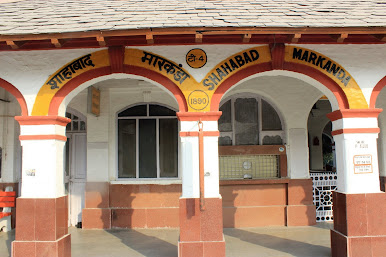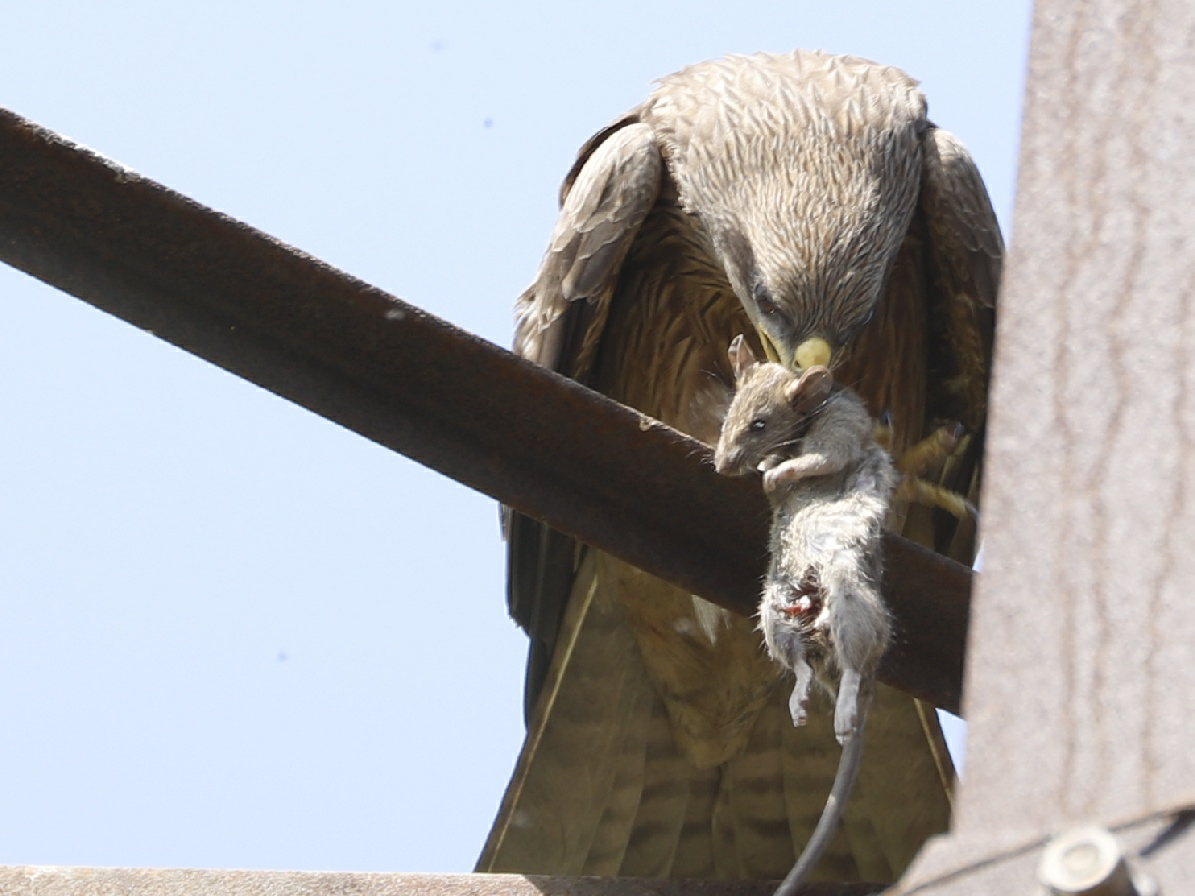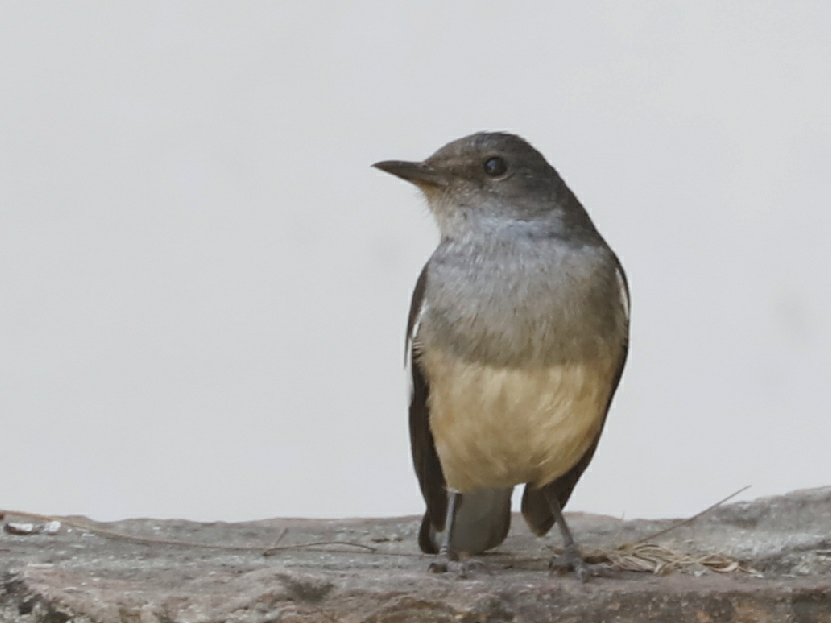1967 was an interesting year politically and various leaders who came and addressed public rallies in the only possible place in Betma's Poora Bazaar aka Bada Bazaar. For every party the stage used to get prepared at far end from main road just opposite Bank Of India and in most rallies the crowd would occupy place right up to the main road and sometimes even beyond that to gaadi adda that was at a slope from where people could see nothing. The PA system using the horn type long speakers from Ahuja Radios (or sometimes some other local suppliers) would ensure that people standing even half a kilometre away could also listen to the leaders.
The leader whose persona and speeches I liked most, however, was Homi Daji a handsome Parsee gentleman in his early forties who delivered fiery speeches. He was a leader of peasants and had touched chords with people. He was from a party called Communist Party of India (CPI) and the party symbol was a Red Sickle and wheat ear (हंसिया बाली). He was also the sitting Member of Parliament from Indore constituency that we were a part of. The candidates challenging him were Prakash Chandra Sethi of Congress and Satyabhan Singhal of Jansangh. Elections were being held simultaneously for Loksabha (parliament) and Vidhansabha ( state assembly). I don't remember names of assembly candidates but the fight was triangular there too.. from Congress there was Bhagwat Sabu who was from a village called Harsola near Mhow and I wondered why was he running from our (Depalpur) constituency that is not his home. In those days Socialist Party had just split in two SSP and PSP (praja socialist party) and PSP was stronger and was a bigger challenge than Jansangh for assembly elections. PSP had banyan tree as their symbol and someone with surname Patel was their candidate. PSP supporters were called झाड़ छाप (tree kind/type).
In one of the public rallies Rajmata Vijayaraje Scindia also came with her daughter Usha Raje who must have been in prime of her youth in early twenties. Both of them were full of exuberance and spreading glow as royals do. That was also the first time I saw a big diamond ring that adorned Rajmata's fingers. Rajmata ( Royal mother) who was the last queen of Gwalior the largest kingdom of Madhya Pradesh. She was a Congress leader but had some personality clash with Indira Gandhi when later became Prime Minister. She was an MP from Guna (1962-67) and had just left Congress party and joined Jansangh. She had also had some tiff with the then Chief Minister DP Mishra, a very honest, upright and strict administrator due to both these reasons she was hell bent upon defeating Congress in both parliamentary and assembly elections. She was the master planner of bringing the first non Congress government in MP and one of the first few in the country.
After a lot of heat when election results came Prakash Chandra Sethi and Bhagwat Sabu were victorious. I felt bad for the charming Home Daji of CPI who certainly had more attraction not just in looks but in his speeches and apparently connections with masses that people say was apparent of the public work he did as a parliamentarian. Of the 296 assembly seats Congress was winner on 167 and Jansangh at only 78. DP Mishra had the mandate to come back as CM for another term. But that was the beginning of modern phase of Chanakya type politics in India. What we see today is quite common as horse-trading was not present in those days. Rajmata planned and played her cards well and split Congress and when the assembly was in its first session some 26 MLAs led by DP's able deputy Govind Narayan Singh moved from treasury benches and sat with the opposition declaring a war on Congress and claimed of forming a first-ever non-congress government under Govind Narayan Singh. Before the floor test most of 26 MLAs got abducted and taken to Gwalior and further to Delhi and suddenly resurfaced in assembly on the day of the floor test a few days later. It was quite obvious that they all got "compensated" handsomely. The new CM was not new to politics he had been a minister for a long time and his father was the first CM of Vindhya Pradesh before formation of Madhya Pradesh. So with 26 MLAs crossing the fence Congress was reduced to 141, 8 short of majority. The new formation of all other parties and independents with some 20 different ideologies formed the new government as संविद (संयुक्त विधायक दल) सरकार ..essentially a thorough khichari. But Govind Narayan Singh learnt early days that it will be difficult for him to carry on. Money paid was also to be recovered and the first casualty to generate money fell on appointments and transfers. If one were to believe available history Rajmata was running the government back seat driving using her aide Sardar Angre to give commands to CM. Short of two years Govind Narayan Singh was fed-up and refused to "obey" Angre on some appointments and as a fall out told Rajmata that he made a mistake leaving Congress that is in his blood and he is returning back in the fold. But all those 26 MLAs could not be cajoled immediately and Raja Naresh Chandra Singh another hardcore congressman and a tribal king was roped in to lead Samvid government. Alas! This simple and pure at heart tribal king who was loved by his subjects when they ruled the princely state Sarangarh, was not a politician who played dirty and so he lasted just 12 days, 4 days shorter than Aral Behari Vajpayee's 16 of his first term as PM later in 1996.
Many years later, I was happy to have Ashok Singh, former CM Govind Narayan Singh's younger son as my classmate in Engineering college, although he had joined a year before me but since he took a one year drop we were leveled, he still is a friend and thankfully stayed away from politics unlike his father, grandfather and brothers..
But Indira Gandhi who was concentrating power in Delhi didn't allow either DP Mishra or Govind Narayan Singh to return as CM instead chose Shyama Charan Shukla son of first CM of the newly formed Madhya Pradesh in 1956, Ravishankar Shukla. Shayama Charan's ministry had lots of new faces and Bhagwat Sabu our MLA was also one of them. Betma turned jubilant and sweets were distributed as it was for the first time that its representative had become a minister. It's regretful that both it's representatives in Bhopal and in Delhi Bhagwat Sabu and Prakash Chandra Sethi, especially Sethi ji who held several important ministries of the country like home and railways in Delhi did very little for the progress of their constituency in their entire career. One example is that of Indore's connectivity with other major business hubs, that still hurts. Indore was always a major business centre of the MP and could have rivalled Bombay and Ahmedabad but for its failure to have a proper railway connectivity that didn't come to it even when PC Sethi was a railway minister. Betma was also promised a rail connectivity on Indore-Dahod route in a survey conducted as early as 1952 but even today after 69 years that project is yet to see the light of the day. That connectivity would have given Indore prominence by bringing Delhi-Bombay route closer and Betma also would have been a different and better place.
That apart, when Sabuji became a minister what he worked hard for was to bring Shyama Charan Shukla (Popularly Shyama Bhaiya) to Betma. As an approaching 12 year old now, I was a lot excited with the prospect of seeing a CM for the first time in my life and somehow managed to be right in front when they along with many other politicians and officers stopped by and took chairs at the verandah of civil dispensary. I was absolutely dumbstruck when I saw a 6 footer slim and handsome Shyama Bhaiya. Don't remember what was being discussed but he looked at me and smiled and that made my day. A bit later coffee was served to them in fine crockery and that was the first time I saw a coffee that could be made by mixing a spoon of coffee into hot milk.. it was Nescafé that I never saw before. In Betma hardly anyone drank coffee but I had heard of and had a taste of Polson coffee made like tea was made and didn't like the taste. Even in those days Nescafé was pretty expensive, I think a 50 gm tin was for Rs 3.00 and compared to a full milk special tea a cup of coffee would cost twice as much and it was not for commoners and hence no one drank.
In the excitement to have a even closer proximity I was standing near the door of the white ambassador that would carry both Shyama Bhaiya and Sabuji on the back seat. As soon as they came and shut the door, I screamed at the top of my voice, my left hand finger was at the door and had got pressed, fortunately the door was not slammed hard and I was happy to see them off with tears in my eyes came out with the pain, fortunately my fingers of left hand got saved, unlike the right one that I will talk some other time..
Pic courtesy a search result on Internet.



















